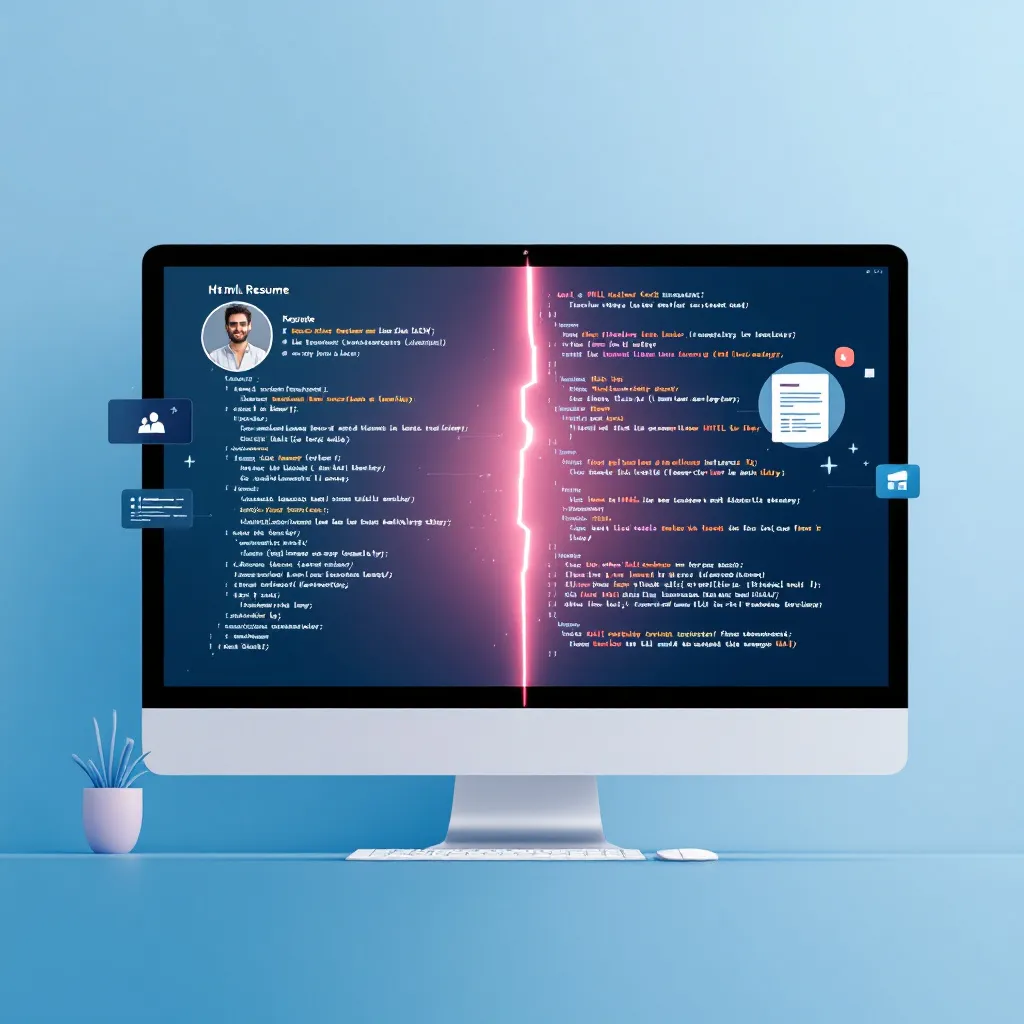In today’s competitive tech job market, your resume serves as the critical first impression for potential employers. A well-crafted software programmer resume not only showcases your technical abilities but also demonstrates your problem-solving skills and professional impact. Let’s explore the essential components and best practices for creating a resume that gets you noticed by both hiring managers and Applicant Tracking Systems (ATS).
Essential Components of a Software Programmer Resume
A strong programmer resume differs significantly from those in other professions, requiring specific technical emphasis while maintaining readability for non-technical reviewers. The most effective software developer resumes include:
Header with Digital Presence
Include not just your contact information, but links to your professional digital footprint. According to research, 87% of technical hiring managers check coding portfolios before making hiring decisions. Your header should feature:
- Full name and contact details
- LinkedIn profile URL
- GitHub repository link
- Personal website/portfolio (if applicable)
Technical Skills Section: Beyond the Basics
Rather than presenting a simple list of languages and tools, organize your technical skills strategically:
- Group by category: Separate “Languages & Frameworks” from “Tools & Platforms”
- Indicate proficiency levels: Consider using descriptors like “Proficient in” versus “Familiar with”
- Prioritize relevant skills: Place skills mentioned in the job description first
- Include relevant certifications: List AWS/Google Cloud certifications here rather than in education
This approach creates an immediate technical profile that hiring managers can scan in seconds. When formatting your skills section, consider using a clean, resume template specifically designed for technical roles.
Project Portfolio Integration
For programmers, actual coding projects often speak louder than formal job titles. Whether professional or personal, highlight 2-3 noteworthy projects with:
- Project name and brief description
- Technologies utilized (bold the primary ones)
- Your specific role and contributions
- Measurable outcomes (e.g., “Reduced API response time by 40% using Go”)
Link your project descriptions to GitHub repositories when applicable, providing hiring managers direct access to your code. The resume formatting for this section should emphasize readability while showcasing technical achievements.
ATS-Optimization for Programming Resumes
Modern resumes must pass through Applicant Tracking Systems before reaching human eyes. To optimize your software programmer resume for ATS:
Strategic Keyword Integration
Include 10-15 technical terms from the job description with natural repetition. Research from remote.com shows that appropriate keyword density significantly improves ATS ranking. Focus on:
- Programming languages specified in the job posting
- Frameworks and libraries mentioned
- Development methodologies (Agile, Scrum, etc.)
- Domain-specific terms (fintech, healthtech, etc.)
Format for Maximum Compatibility
- Use standard section headers like “Technical Skills” instead of creative alternatives
- Submit as .docx (95% ATS compatibility) rather than PDF for better parsing
- Implement a single-column layout with minimal design elements
- Avoid text boxes, tables, and graphics that confuse ATS systems
Looking at american resume format samples can provide inspiration for ATS-friendly designs that remain visually appealing.
Experience Section: Telling Your Technical Story
Your experience section should demonstrate both technical capability and business impact. Use the PAR (Problem-Action-Result) methodology to structure your bullet points:
- Problem: What technical challenge did you face?
- Action: How did you solve it using your programming skills?
- Result: What measurable impact did your solution have?
For example: “Migrated legacy PHP system to Node.js, improving transaction throughput by 220% and reducing server costs by $30K annually.”
When describing your experience, use strong action verbs like “engineered,” “architected,” and “optimized” instead of passive phrases like “worked on” or “was responsible for.” This approach aligns with recommended practices for resume examples across technical fields.
For open-source contributors or self-taught programmers, include substantial non-paid work as equivalent experience: “Contributed 50+ PRs to React OS project, implementing core UI components used by 10K+ monthly users.”
Resume Design for Technical Professionals
While content is paramount, design elements can enhance readability and visual appeal:
- Layout: Implement a single-column format with 95% higher ATS readability scores
- Typography: Use clean, professional fonts like Roboto for headers and Source Sans Pro for body text
- Spacing: Maintain 1.15 line spacing with 0.5″ margins to maximize content density
- Subtle color: Consider using tech-neutral colors like #2B579A (Microsoft blue) for section headers
While some creative fields benefit from cool looking resumes, programming positions typically favor clean, straightforward designs that emphasize content over visual flair.
Common Pitfalls and How to Avoid Them
Even experienced programmers make these resume mistakes:
❌ Generic objective statements
Fix: Replace with a specific value proposition like “Full-stack developer specializing in FinTech APIs with $3M+ processed transactions”
❌ Skills keyword stuffing
Fix: Contextualize technologies within project descriptions to demonstrate actual implementation
❌ Irrelevant early career roles
Fix: Compress pre-tech experience to one line or omit entirely if space is limited
❌ Passive language
Fix: Use action verbs that demonstrate initiative and ownership
For those struggling with resume creation, affordable resume writing services specializing in technical careers can provide valuable assistance.
Final Thoughts
A powerful software programmer resume balances technical precision with clear communication of value. By implementing these strategies, you’ll create a document that effectively represents your programming expertise and professional impact. For optimal results, tailor each resume to the specific role and company, emphasizing the skills and experiences most relevant to your target position.
Need help crafting your perfect programming resume? ResuFit offers AI-powered resume optimization specifically designed for technical roles, helping you pass ATS systems and impress hiring managers with perfectly tailored documents in minutes.




